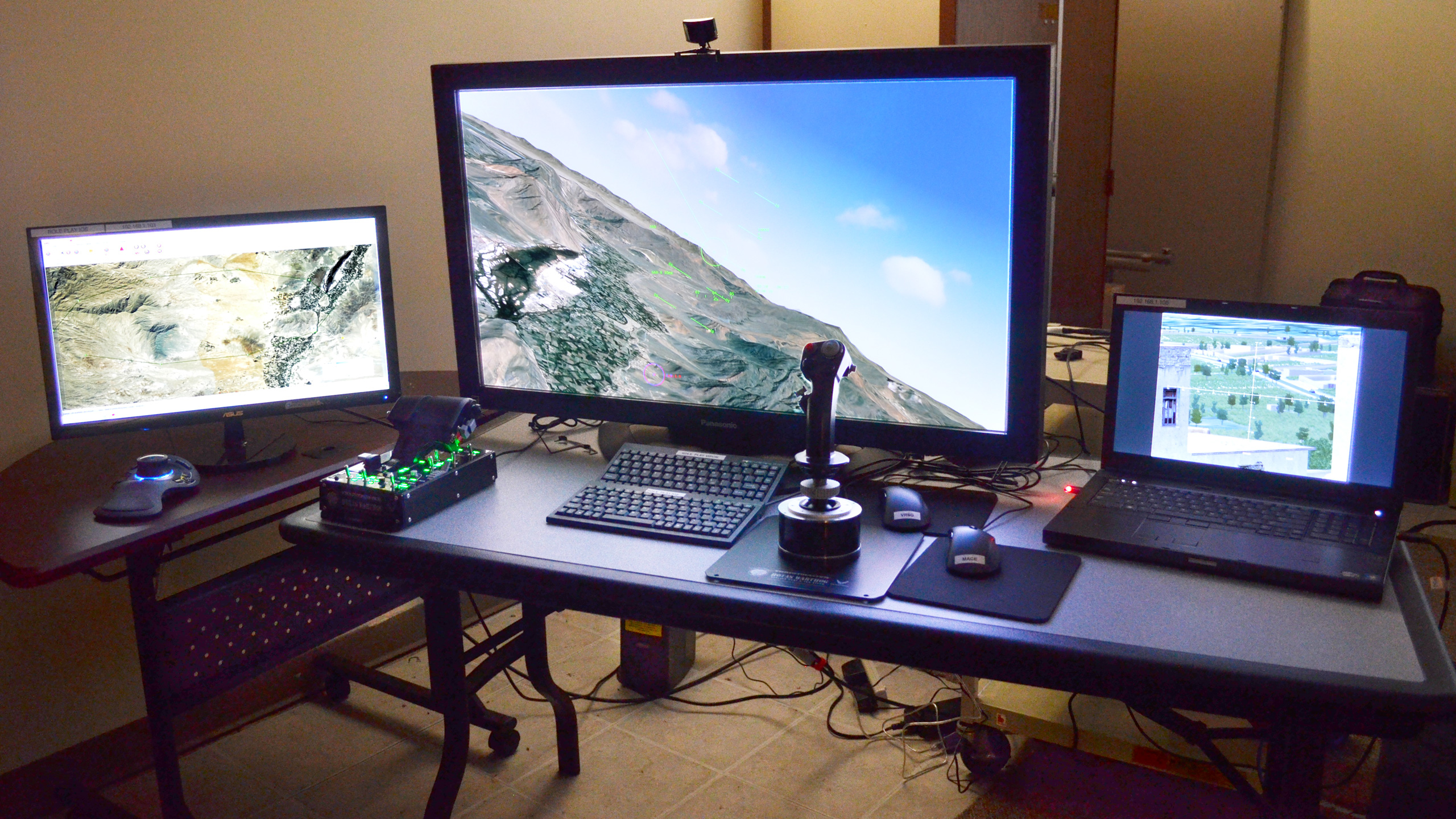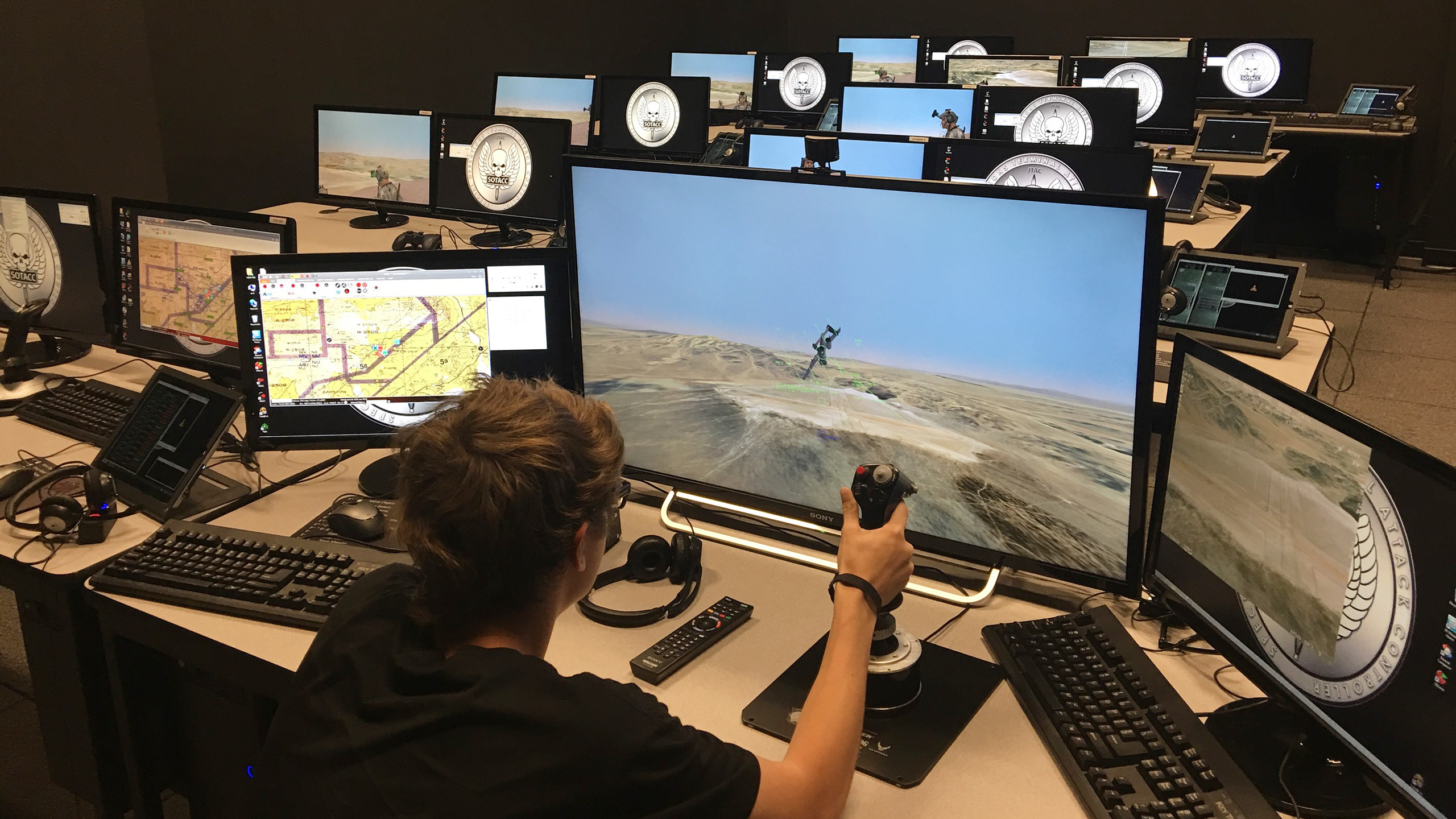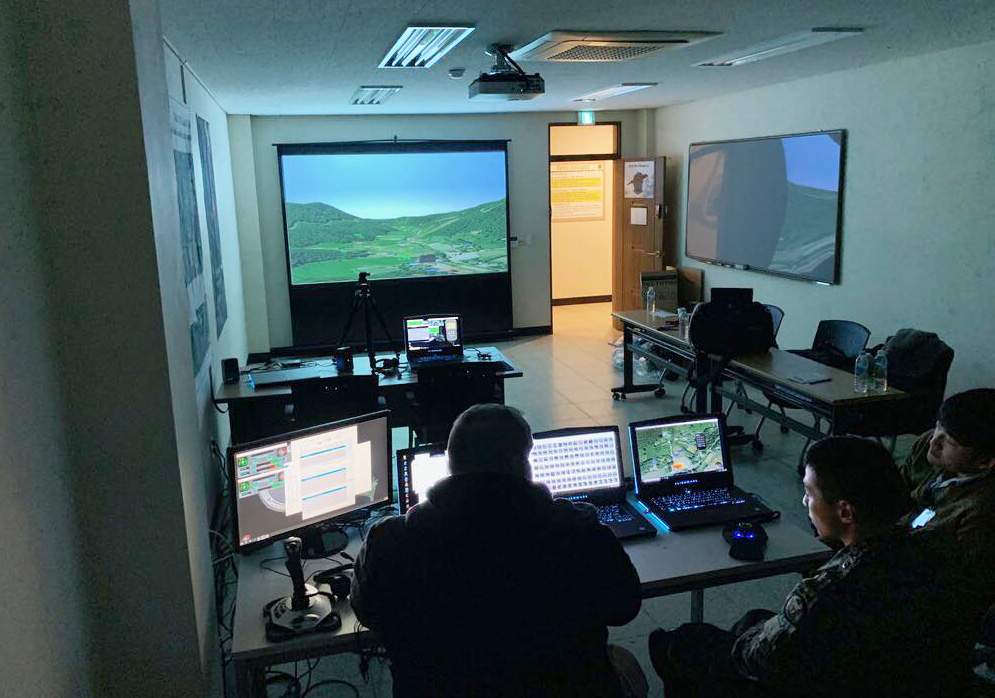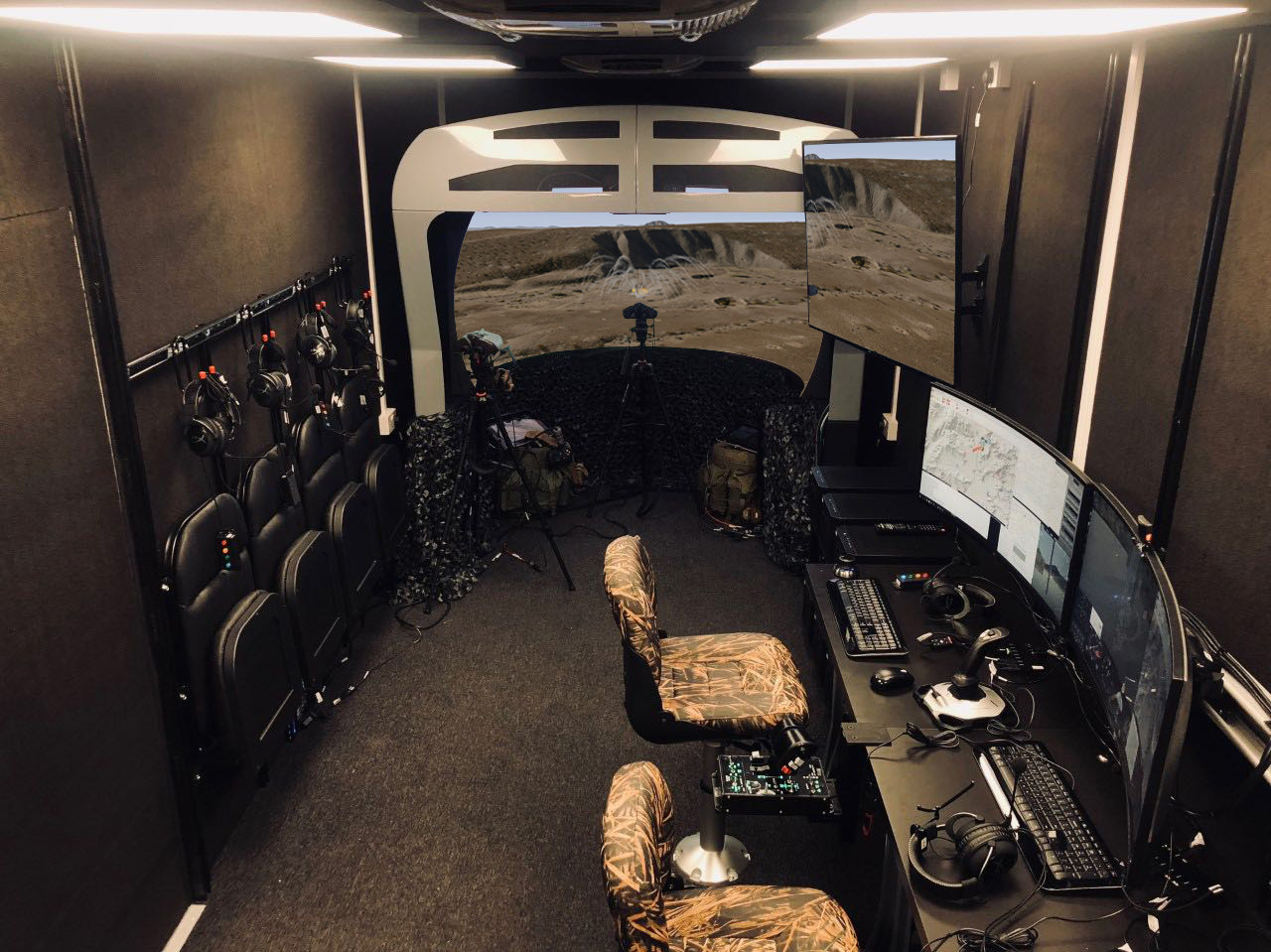Desktop & portable simulators/classrooms

Role player setup of the desktop JTAC simulator at Hurlburt Field with BSI MACE on the left, and MVRsimulation visuals on the plasma screen in the center and on the notebook screen on the right. (Photo courtesy of BSI.)
JTAC training sites in the US and abroad use MVRsimulation Virtual Reality Scene Generator (VRSG) and Battlespace Simulations' software in JTAC desktop simulation systems in various configurations including classrooms. Like the JTAC training dome systems, these simulation systems are accredited by the Joint Fire Support Executive Steering Committee for types 1, 2, 3 for both day and night, and for laser target designation with simulated military laser, in accordance with the JTAC Memorandum of Agreement.
Since 2013, the US Air Force Special Operations Command (AFSOC), Air Combat Command (ACC), and Air Support Operations Squadron (ASOS) JTAC training sites in the US and abroad have used MVRsimulation and BSI’s software in JTAC desktop simulation systems. These systems include the AFSOC JTAC Simulator (AJS) and the JTAC/TACP-Operational Simulation Suites (J/T-OSS 2.0) used by Air Combat Command (ACC).
This JTAC simulator is comprised of BSI's MACE scenario/entity generator and MVRsimulation’s VRSG. The system also includes an integrated software based Distributed Interactive Simulation (DIS) radio, a recording capability for recording and AAR/playback of missions, and a simulated laser range finder/laser designator. This privately funded COTS solution, enables users to perform training missions on a virtual battlefield with close air support interfaces such as 9-Line, 5-Line, and Call for Fire. Features that support training missions include physics-based weapons performance, laser target designation, full-motion infrared video feeds, a mission editor, human-level behaviors, path finding, blast effects calculations, complex weather system control, and a robust weapons and entity library. The JTAC system is capable of importing existing military topographic database information to allow operators and instructors to quickly develop scenarios appropriate for mission rehearsal.
Hurlburt Field, FL
The Special Tactics Training Squadron (STTS) simulation facility at Hurlburt Field, FL, uses MVRsimulation/BSI desktop JTAC simulators in a two-classroom setup with 24 VRSG licenses coupled with BSI’s MACE software. Each classroom, designed, configured, and installed by BSI, consists of eight JTAC student stations, an instructor station, an instructor role-player station, and a NVIS Ranger 47 simulated laser range finder. Each station contains a communications suite on a tablet with BSI’s Viper DIS Radio software to simulate PRC-117, PRC-148, PRC-152 radios, and a ROVER feed of VRSG’s simulated sensor view. Two terrain servers are loaded with MVRsimulation’s CONUS++, Asia, and Africa terrain datasets and 3D content. The two classrooms share a DIS network, which enable students to collaborate on exercise missions.

Republic of Korea
BSI was awarded an order by GB International to deliver two JTAC portable simulators to the Republic of Korea (ROK) Army Special Warfare School that include eight VRSG licenses, terrain, and models. 3D terrain of the entire Korean peninsula in MVRsimulation’s round-earth terrain format is being provided by a collaborative effort between the Simulator Database Repository at Kirtland Air Force Base and the Joint Close Air Support (JCAS) Section of the Joint Staff, Joint Fires J6 division. The BSI JTAC simulators include an instructor station, student station, communications suite (with radios, ROVER feed, Defense Advanced GPS Receiver (DAGR)), and a BSI-developed emulated Laser Target Designator to provide the ROK a JTAC training system currently in use by US and NATO forces.
The simulator is designed for a classroom setup or a configuration that can easily transition to custom ruggedized cases for use in the field. In addition to VRSG, the ROK JTAC simulator uses BSI’s MACE, Viper DIS radio, Worldwide Open Street Map software, and simulated DAGR software.

Portable JTAC simulators installed at the Republic of Korea (ROK) Army Special Warfare School. (Photo courtesy of BSI.)

Joint Fires Mobile Trainer (JFMT) with MVRsimulation visuals.
British Army's 1st Artillery Brigade
MVRsimulation visuals are part of the initial configuration of the Joint Fires Mobile Trainer (JFMT) in use by the UK Ministry of Defense for the British Army's 1st Artillery Brigade. For this contract prime contractor Elbit Systems UK partnered with QuantaDyn to provide a managed training service. The training classroom is completely self-contained within a 20 ft. trailer, and uses the same underlying technology as the abovementioned installations. This system uses IDSI's VisionStation 3 to render an immersive virtual environment. The setup includes a student station with a full suite of simulated military equipment, an instructor/operator station, a pilot or role player station, and a mission brief/after action review station suitable for a team of four. Like the JTAC training systems on which this system is based, this new mobile JTAC training facility provides fully accredited training for Type 1, 2, and 3 day and night close air support control; laser designation and call for fire training.
